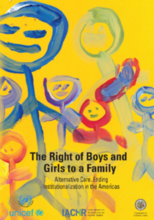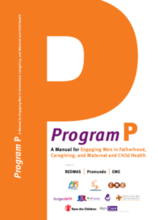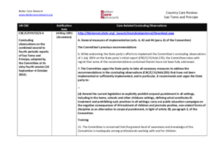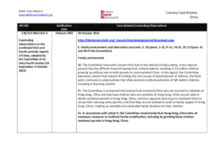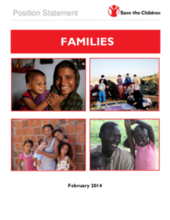Displaying 641 - 650 of 943
This article investigates effectiveness of parenting interventions on reducing harsh and harmful parenting practices in low-to-middle income countries.
This study examines the prevalence of maternal and paternal spanking of children at 3 and 5 years of age and the associations between spanking and children's externalizing behavior and receptive vocabulary through age 9.
This section is the second of three in Program P: A Manual for Engaging Men in Fatherhood, Caregiving, and Maternal and Child Health.
This report by the Inter-American Commission on Human Rights (IACHR) analyzes children’s right to live and be raised by their families, and establishes the resulting obligations for States when it comes to supporting and strengthening families’ ability to raise and care for their children.
This final section of Program P: A Manual for Engaging Men in Fatherhood, Caregiving, and Maternal and Child Health is designed for health sector workers and activists who are interested in developing and implementing social-awareness-raising activities in their community that promote the benefits of active fatherhood as a way to achieve gender equality, benefit children, and improve the lives of men and women.
The Program P Manual is a resource developed as part of the global MenCare campaign that identifies best practices on engaging men in maternal and child health, caregiving, and preventing violence against women and children, through the lens of gender equality. Though the main focus of Program P is to engage men via the public health sector, the manual also provides tools and resources for individuals and organizations that want to work more generally with men as caregivers and fathers.
This section is the first of three in Program P: A Manual for Engaging Men in Fatherhood, Caregiving, and Maternal and Child Health.
This country care review includes the Concluding Observations for the Committee on the Rights of the Child adopted as part of its examination of Sao Tome's combined second to fourth periodic reports at the 64th Session of the Committee held between 16 September to 4 October 2013.
This country care review includes the Concluding Observations for the Committee on the Rights of the Child and the Committee on the Rights of Persons with Disabilites.
This position statement by Save the Children highlights the central place of families in numerous international legal instruments and how the concept has been understood. It also clarifies its own understanding of families and reviews key provisions under international law regarding their crucial role and responsibilities, and that of States towards them.


